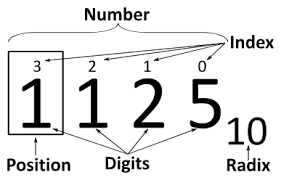The number system is a fundamental concept in mathematics that involves the study and classification of numbers. It provides a framework for representing and manipulating numerical quantities. The number system consists of various types of numbers with unique properties and characteristics.
- Natural Numbers (N): Natural numbers, also known as counting numbers, are the set of positive integers starting from 1 and extending infinitely (1, 2, 3, 4, …).
- Whole Numbers (W): Whole numbers include all natural numbers along with the number zero (0). The set of whole numbers is represented as (0, 1, 2, 3, 4, …).
- Integers (Z): Integers include all whole numbers, including negative numbers. The set of integers is represented as (… -3, -2, -1, 0, 1, 2, 3, …).
- Rational Numbers (Q): Rational numbers are numbers that can be expressed as fractions (ratios) of two integers, where the denominator is not zero. Rational numbers can be finite or recurring decimals. Examples of rational numbers include 1/2, 3/4, -5/2, 0.25, and -0.333…
- Irrational Numbers (I): Irrational numbers are numbers that cannot be expressed as fractions and have non-terminating and non-recurring decimal expansions. Famous examples include π (pi) and √2 (square root of 2). Irrational numbers are infinite and cannot be expressed accurately as a decimal or fraction.
- Real Numbers (R): Real numbers encompass both rational and irrational numbers. Real numbers form a continuous number line and include all possible values, whether rational or irrational. The set of real numbers is represented by the symbol R.
- Complex Numbers (C): Complex numbers are numbers in the form a + bi, where “a” and “b” are real numbers, and “i” is the imaginary unit (√-1). Complex numbers allow the representation of both real and imaginary components. For example, 2 + 3i is a complex number.

Question: Find the sum of all two-digit numbers that are divisible by both 3 and 5.
Solution: To find the numbers that are divisible by both 3 and 5, we need to find their common multiples. The first common multiple of 3 and 5 is 15. We need to find the last two-digit number divisible by 15.
The largest two-digit number divisible by 15 is 90. To find the number of terms in the sequence of numbers divisible by 15, we can use the formula for the nth term of an arithmetic sequence:
a + (n – 1)d = 90, 15 + (n – 1)15 = 90, 15n = 90, n = 6.
So, there are 6 two-digit numbers divisible by both 3 and 5.
To find the sum of these numbers, we can use the formula for the sum of an arithmetic series:
Sn = (n/2)(a + l), S6 = (6/2)(15 + 90), S6 = 3(105), S6 = 315.
Therefore, the sum of all two-digit numbers divisible by both 3 and 5 is 315.
Important Links